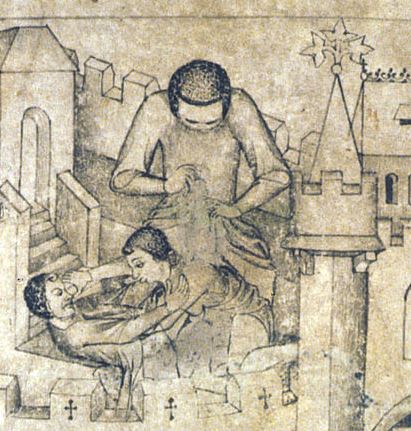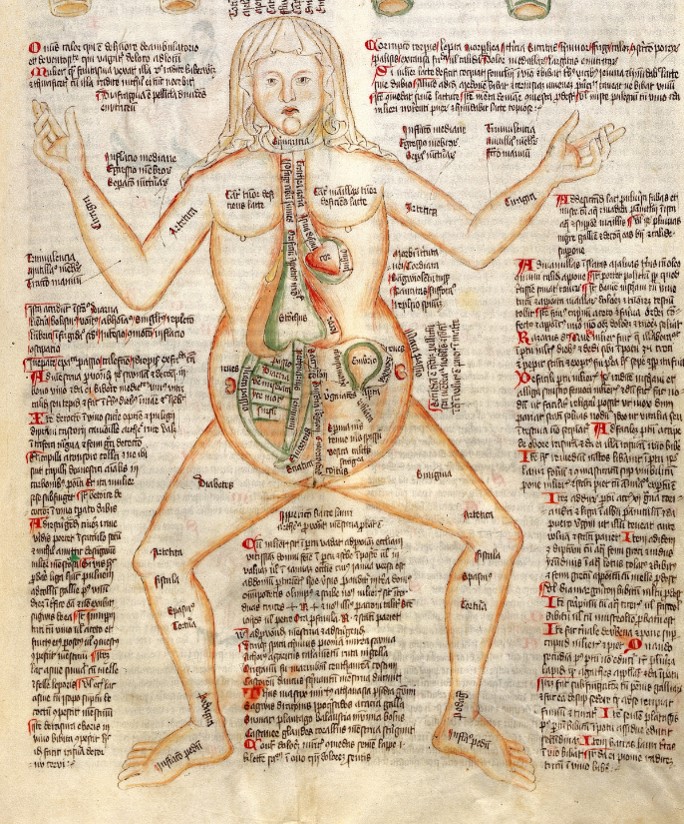In the early twelfth century, reported Gerald of Wales, a demon physically attacked a young monk. Whenever this monk prostrated himself in prayer, ‘an evil spirit approaches him, places its hands on his genital organs, and does not stop rubbing his body with its own until he is so agitated that he is polluted by an emission of semen.’ Otherwise, the young monk behaved well. Yet when Bishop Hildegard of Le Mans (1096-1125) considered the case, he ruled that the monk could no longer be considered a virgin, since he has been ‘polluted…through masturbation’ and has been tempted by the devil to consent to a ‘shameful act of fornication.’

Stories such as this one have contributed to the popular view that, throughout history, masturbation has been considered as inherently sinful; only in our modern, so-called sexually-liberated age has the taboo surrounding self-pleasure started to dissolve. There is certainly some truth in this view, for Bishop Hildegard was not the only medieval churchman to be concerned by the sinful nature of solo sexual acts.
According to the fifth-century monk John Cassian (whose works remained influential throughout the medieval period), there were three kinds of fornication: intercourse, masturbation, and fornication in the heart and mind. The twelfth-century theologian Pierre de Poitiers condemned masturbation as monstrous because it combined the active male and passive female roles in one person, as in a hermaphrodite. Most medieval penitentials (handbooks for confessors) identified masturbation as a sin, and imposed heavy penances for it- typically around thirty days of fasting, but sometimes as much as two years. Some churchmen even argued that masturbation was too grave a sin to be dealt with by a parish priest, and insisted that only a bishop could punish and pardon one who had committed such an unnatural act.
Even within the medieval Church, however, there were some who took a more relaxed stance. Many penitentials ranked sexual sins in order of severity, and typically placed masturbation towards the bottom of the hierarchy. Confessors were also permitted to make some allowance for the personal circumstances of the penitent, with laymen, youths, and those without a spouse typically receiving a lesser penance than clerics (who were supposed to show restraint) or married men (who were supposed to have procreative intercourse with their wives). A man or woman who was denied sexual intercourse by his or her spouse might also be considered to have extenuating circumstances, and the spouse who failed to perform his or her marital duty would share some of the responsibility for any consequent sexual sins.
These nuances within the penitential system perhaps reflect the medieval medical belief that men and women needed to have sexual intercourse for the sake of their health. Whilst nineteenth-century doctors worried about the physical and mental consequences of masturbation, their medieval counterparts believed that it could have positive effects for their patients. According to contemporary medical theory, both men and women expelled seed when provoked to orgasm. This seed was necessary for conception, but if it was allowed to build up within the body, it could cause serious illness, or even death. In order to avoid such dire consequences, ancient medical authorities such as Galen had recommended masturbation as a form of preventative medicine for both men and women.
Later medieval physicians were rarely this explicit in their writings on sexual health, but doctors continued to recommend the stimulation of the genitals (either by the patient or by a medical professional) for those whose well-being was threatened by a lack of regular sexual relations. Such treatments were particularly suitable for women who were suffering from suffocation of the womb, as a consequence of the retention of seed. In such cases, marriage was the best solution, allowing a woman to expel seed through regular, Church-sanctioned, procreative intercourse. If, however, a woman could not marry (for example, because she was a nun), and if her life was in genuine danger, then genital massage might be the only solution and could even be performed without sin. The English physician John of Gaddesden (c. 1280-1361) thought that such a woman should try to cure her condition through exercise, foreign travel, and medication. But
if she has a fainting fit, the midwife should insert a finger covered with oil of lily, laurel or spikenard into her womb, and move it vigorously about.
Other medical writers echoed Gaddesden’s teachings. The Dominican friar Albertus Magnus (c. 1200-80) wrote extensively about human health, and similarly argued that certain women needed to
use their fingers or other instruments until their channels are opened and by the heat of the friction and coition the humour comes out, and with it the heat.
Indeed, Albertus thought that such a course of action would not only solve women’s health problems, but also lessen their desire for sexual intercourse, since ‘their groins are cooled off and they are made more chaste.’

In most respects, the medieval world found female sexuality more problematic than its male equivalent. It is therefore surprising to find that many commentators were less troubled by women who pleasured themselves than by their male counterparts. Such attitudes are partly explained by perceived biological differences between the sexes. Albertus Magnus argued that female masturbation does not involve any generative matter, and consequently was not inherently sinful. The semen spilled in male masturbation, however, could be viewed as a sacrifice to the Devil. Furthermore, medical theory suggested that men could experience involuntary nocturnal pollutions without impure thoughts or deeds. It was therefore possible for the male humours to be rebalanced without sin, thus there was no need for men to arouse themselves.
There were also strong social and cultural reasons why medieval society might condemn male masturbation, whilst simultaneously condoning, or at least turning a blind eye to, female self-pleasure. Laymen were less constrained by concerns about sexual reputation than their female counterparts and enjoyed alternative outlets for their sexual appetites, including prostitution. Women lacked such options, and thus one of the great benefits of female masturbation was its ability to prevent less socially acceptable forms of female sexual activity. According to the monastic author of the late medieval Breviarium Practice, the wives of Italian merchants frequently indulged in solitary sex, aided by a range of implements. There was good reason for their behaviour: their husbands frequently undertook long business trips, and it was better that they satisfy themselves than engage in extra-marital affairs which might produce illegitimate offspring.
Whilst the truth of such tales must remain unknown, they encapsulate medieval attitudes toward masturbation. Some sections of medieval society clearly were repulsed by any form of non-procreative sexual activity. The most vocal of these were clerics whose disgust embraced all sexual activity, whatever its purpose. Generally, there was an intriguing degree of pragmatism in medieval attitudes to masturbation: it was bad for the soul, but might be good for the body, and for the maintenance of social order. The Middle Ages were hardly an age of sexual freedom, and medieval Europe was too concerned with sin to consider masturbation a good thing. Yet the existence of such conflicting ideas about solitary sex meant that medieval attitudes to masturbation were arguably rather more enlightened than those of the so-called Age of Enlightenment, several hundred years later.
 Katherine Harvey is Wellcome Trust Research Fellow at Birkbeck College, University of London, where her research focuses on the pre-Reformation English episcopate. Her first book, Episcopal Appointments in England, c. 1214- c. 1344, was published by Ashgate in January 2014, and she has also written several articles on the medieval episcopal body. Her current research project is ‘Medicine and the Bishop in England, c. 1100- c. 1500.’ She tweets from @keharvey2013
Katherine Harvey is Wellcome Trust Research Fellow at Birkbeck College, University of London, where her research focuses on the pre-Reformation English episcopate. Her first book, Episcopal Appointments in England, c. 1214- c. 1344, was published by Ashgate in January 2014, and she has also written several articles on the medieval episcopal body. Her current research project is ‘Medicine and the Bishop in England, c. 1100- c. 1500.’ She tweets from @keharvey2013

NOTCHES: (re)marks on the history of sexuality is licensed under a Creative Commons Attribution-NonCommercial-NoDerivatives 4.0 International License.
Based on a work at www.notchesblog.com.
For permission to publish any NOTCHES post in whole or in part please contact the editors at NotchesBlog@gmail.com





Thank you for more excellent research. I will spread this URL to friends who (they are Asian) still refuse to pleasure themselves for reasons that baffle me.